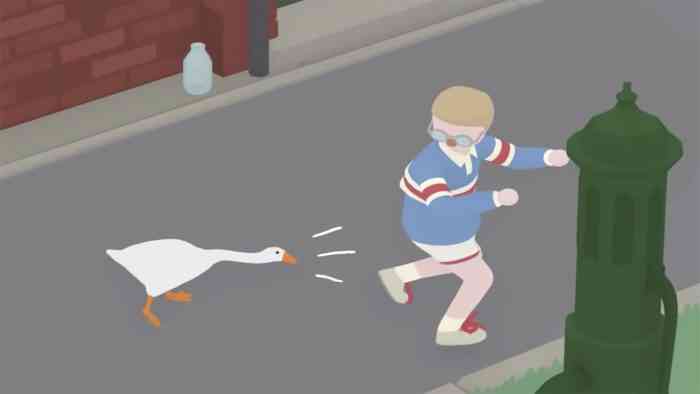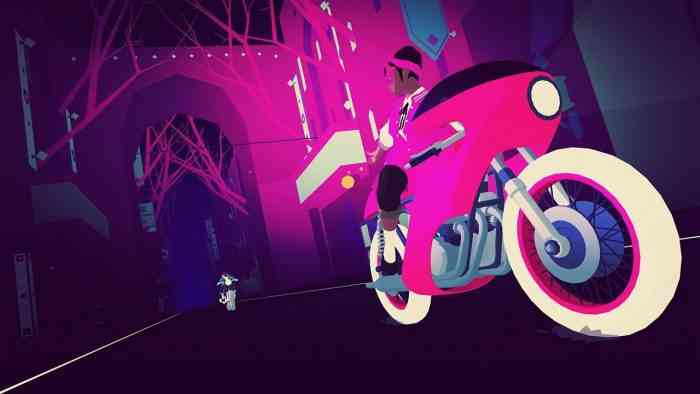Five Things We Should be Thankful For
Happy Canadian Thanksgiving! It’s time to celebrate and be thankful for all the wonderful things we have, and as gamers, I think we have many things to be happy about. Sure, our industry can be full of drama and disappointment but you can’t disagree that we are always moving forward. So, grab a turkey leg, drown those potatoes in gravy, and celebrate why it’s so great to be a gamer in 2019!
1. Games as Art
Yes, I’m calling the Goose Game a piece of art.
This has been a debate that’s probably been going on argued even before I was even born. Every year though, especially recently, I noticed more and more people are starting to discuss games as an art form. I think we can be thankful to the indie scene for a lot of that! For big triple-A studios, there’s just too much investor money on the line for them to experiment on many passion projects (RIP P.T), but more on Kojima later), but that’s exactly where independent studios can shine. If you ask any indie developer if they do what they do for money, they’d probably laugh. Most indie games are made through blood, sweat, and hours and hours of unpaid labour running on nothing but passion. You usually don’t see a penny until the project is done, and even then, the chance for success is small—but that doesn’t matter for many of these devs, they just want to make something that they can be proud of. To me, if that isn’t an artist, I don’t know what is.
Which brings me to Untitled Goose Game, the sleeper hit of 2019. A game so simple, so accessible, yet fun to play and charming to look at, Goose Game took over the internet by the storm. But did you know? The four-person team, House House, was supported by the government? Yea, it was! Film Victoria, a government organization made to support screen/TV productions helped fund this game. This really warms my heart that some governments are recognizing developers as artists that need to be supported, like writers and filmmakers. I’m sure the game was still built upon blood and sweat, but at least these guys didn’t have to worry about the roof above their heads. And now the world gets to enjoy the Goose Game, that is something to be thankful for.

2. Gaming is Becoming (More) Universal
There are so many more niche games being made that there’s bound to be something for everyone, and to be honest, these smaller games wouldn’t have had the chance if it weren’t for gaming’s constantly growing population. That means there is a market for both casual pick-up-and-go games as well as games that are so complex that you need to play three other games to understand properly. A lot of this is thanks to the fact that most of us carry around a portable gaming system with us at all times—the all-powerful smartphone. And before anyone starts talking about “real” games, let me tell you, there is absolutely nothing wrong with gaming on your phone, especially now, as we’ve been getting some truly interesting titles like Sayonara Wildhearts on Apple Arcade. These types of easily accessible entry into gaming didn’t exist when you had to invest hundreds of dollars to own a console, or, god forbid, a gaming PC. Now, people who would’ve never tried gaming before are jumping right in, and many are even buying into other platforms once they realize their love for gaming. I still remember when finding other gamers in real life was a rare occurrence, and I’m honestly grateful that we have so many more people to share these amazing experiences with.

3. Accessibility Options
Every year games are becoming more accessible for everyone and developers are becoming more aware of making their games around people’s disabilities. On top of further development on hardware made for people with disabilities, this year, AbleGamers Charity launched Accessible Player Experience, a master guide on things devs should be mindful of to make their games more accessible. It’s a fascinating read even if you aren’t a dev, I highly recommend it. It breaks down little details you might’ve not even noticed while playing, such as full captioning for important sound effects (like an explosion behind you) within the subtitles for deaf players.
I think difficulty is something that gets on a lot of people’s nerves when it comes to the discussion around accessibility, and I think APX puts it perfectly:
“We are not saying you should limit or water down the experience your game offers. If you want your game to offer the edge-of-the-seat tension of stalking a wild animal through the forest then that’s the player experience you should be aiming for. What APX offers is a way to think about whether you could provide that experience to players with different types of disabilities.”

Sekiro: Shadows Die Twice caused a huge debate about “easy mode” this year. To take an example from Celeste, last year’s indie hit, the assist mode in that game was a thoughtful implementation of augmentable difficulty that isn’t watering down the experience, for you to be able to find the sweet spot that works for you. I think the problem with Sekiro isn’t that there wasn’t an augmentable difficulty in that game, because there are many things in that game that can make it easier, it’s just that they weren’t made apparent to the player. Things like knowing that certain strategies or items can make some bosses trivial, grinding for levels when stuck on a fight, and utilizing the right consumables can help a lot, but not much in the game points the players to these things. Other FromSoft games had co-op, which was their augmentable difficulty that not only got friends to help you but also gave you access to learning tricks and secrets by simply watching others play. I think without much change, Sekiro could have been a much more accessible game if FromSoft were just a bit more mindful about these little details. In the end, regardless of where you stand on this, I love the fact that people are actively discussing these topics now.
Click on through to PAGE 2 for the final 2 things to be thankful for…